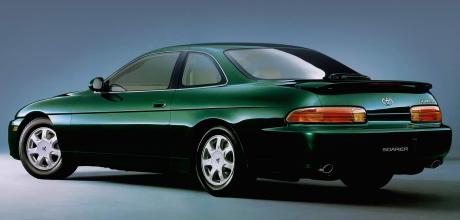First production-series car with a reverse camera 1990 Toyota Soarer Limited
A recent study by US automotive consumer guide Edmunds revealed around 15 000 people are injured in automobile incidents while a vehicle is reversed in the United States alone. It’s a sobering statistic; one that becomes all the more tragic when we consider that of those, 210 are fatal and 31% involves children.
THE INNOVATORS
The cars we drive today were influenced by these pioneers
So, it’s little wonder that legislation was passed in North America in 2018 requiring all new vehicles to be fitted with some form of a rear-facing camera system, with European countries mulling similar measures in coming years. But where did the idea originate?
Between 1949 and 1961, General Motors staged its motor show dubbed Motorama. This annual event not only showcased a wealth of fanciful concept vehicles heavily influenced by the onset of the Jet Age, but allowed the company to apply ambitious technologies to examples of its production car offerings. At the 1959 show, a Buick Centurion concept car featured a rear-mounted television camera connected to a TV screen that replaced the car’s rear-view mirror. At the time, it was seen as a flight of fancy; in the same light as the rocket-inspired Firebird III and the glass-canopied Cadillac Cyclone between which the Centurion nestled. Little more came of the reverse camera concept until the unveiling of Volvo’s far less glamorous but safety equipment-packed VESC (Volvo Experimental Safety Car) unveiled at Geneva in 1972.
The Volvo’s system was provided by Mitsubishi Electric and comprised a Cosmicar lens mounted between the taillamps, feeding a CRT monitor situated in the cabin.
It was only in 1990 that the Japanese market Toyota Soarer Limited became the first production car to feature a reverse camera system. Where previous units relied on bulky video cameras, the Soarer’s setup featured a CCD (charged-coupled device) with a transistorized light sensor on an integrated circuit. This compact camera fitted into the Soarer’s rear spoiler housing and digitally transmitted a live colour feed to a dash-mounted screen, providing the driver with a clear view of objects below the rear-view mirror’s line of sight.
The Soarer’s system was discontinued in 1997 but further advances in the guise of computer-generated guidelines and multiple-camera setups that offered a 360-degree view of vehicle surroundings followed within the next decade.
THEY ALSO PAVED THE WAY
- 1965 BUICK CENTURION Concept version shown at the 1956 General Motors Motorama technology showcase featured a rear-mounted television camera that fed images to a TV screen in the dashboard.
- 1982 TOYOTA CORONA The Corona was the first production car to feature ultrasonic sensors in its rear bumpers, a common supplement to camera-driven reversing aids.
- 2002 NISSAN PRIMERA The Primera was the first car to introduce colour guideline overlays on a reversing camera feed to assist the driver with vehicle placement in areas such as designated parking bays.
- 2007 INFINITI EX35 Infiniti’s crossover became the first production car to feature a 360-degree viewing field via a network of cameras in the grille, wing mirrors and tailgate.


